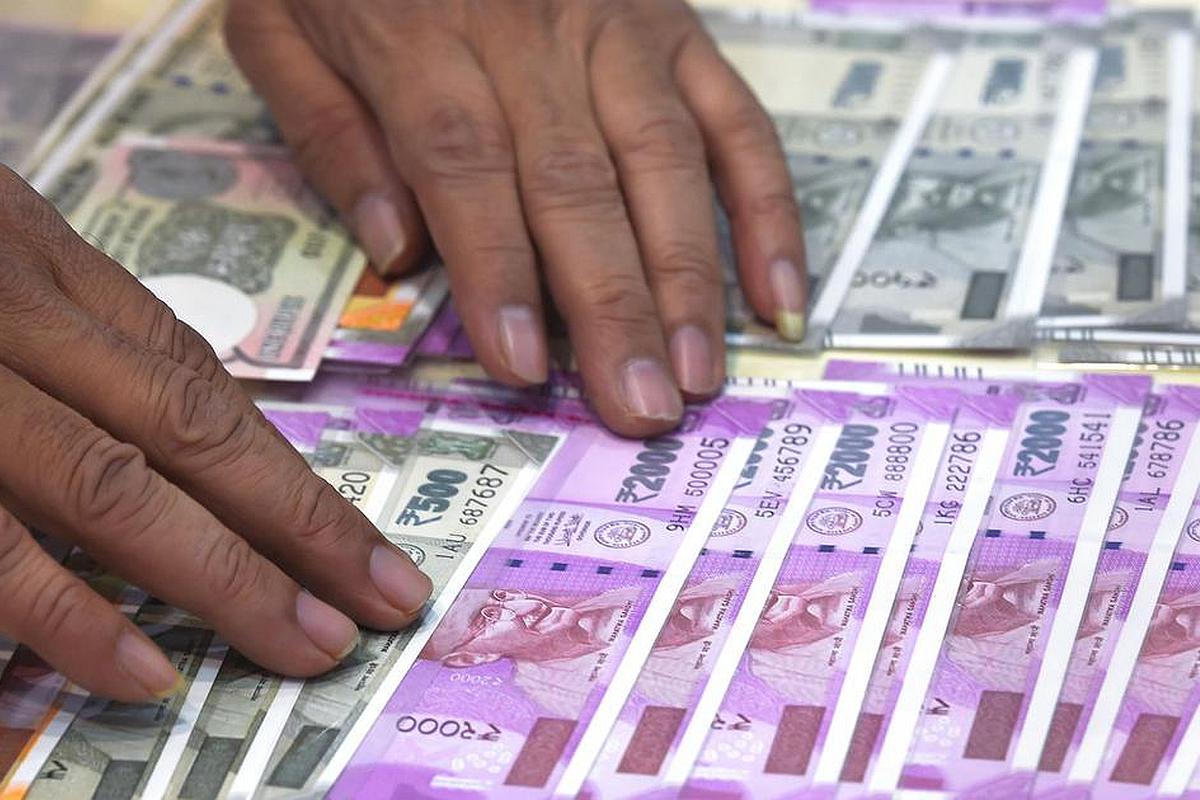MoS Finance bats for including ‘new voters’ in banking sector
Union Minister of State for Finance Bhagwat Karad on Monday urged the need to incorporate 'new voters' into the banking sector by opening their bank accounts.
The Court was constrained at different points of time to tell the government not to hide behind the Reserve Bank’s skirts, to express dissatisfaction at the stand taken by it and on 10 September to give the government a last chance to respond to borrowers’ woes.

Indian Rupee. (Photo: AFP)
Readers who glance at headlines on the business page of this and other dailies would have noted the almost uniform improvement in the fortunes of major banks in the country in the last two quarters. Indeed, the banking sector has been almost unique in recording increases in profitability while all others have recorded whopping losses.
The country’s largest bank, the state owned State Bank of India, reported a jump in net profit from Rs 2312 crore in the corresponding quarter last year to Rs 4189.34 crore this year. Private sector HDFC Bank reported a jump from Rs 6345 crore to Rs 7513 crore. Even relatively weaker banks have shown a huge upswing in fortunes, Kolkata-based UCO Bank posting a Rs 30-crore profit after a Rs 892 crore loss last year; IDBI Bank recording a Rs 324 crore profit after a Rs 3459 crore loss last year and Yes Bank showing a profit of Rs 129.37 crore after a loss of Rs 600 crore loss last year.
And yet the Central government had to have its ears repeatedly boxed by the Supreme Court before it agreed, most reluctantly, to waive interest on interest for the moratorium that was allowed by banks to cope with the distress caused by the coronavirus pandemic and the consequent lockdowns.
Advertisement
The Court was constrained at different points of time to tell the government not to hide behind the Reserve Bank’s skirts, to express dissatisfaction at the stand taken by it and on 10 September to give the government a last chance to respond to borrowers’ woes.
It took until 5 October for the government to be coerced to state that it was willing to waive interest on interest. And yet on 14 October, the Court had to ask why the Government was still dragging its feet on implementing what it had promised. Sadly, on the question of waiving usurious interests, the government has shown the reluctance of a recalcitrant child being dragged to school. And now, it emerges that all this was happening while many banks were busy increasing their profits, in a sense profiting from the misery of their customers.
As it is, India’s banking system is hugely inefficient. Net interest margins – the difference between lending and borrowing rates – are inordinately high. Banks have been reluctant to pass on fully even the rate reductions announced by the Reserve Bank.
Prime lending rates of most banks are at about 12 per cent, while savings bank interest rates are below 3 per cent, and term deposit rates hover around 6 per cent. To put this in perspective, consider that the net interest margin in Singapore is less than 1.7 per cent and that of HSBC UK is 2.07 per cent. This in effect means that the colossal inefficiencies of Indian banks are being subsidised by their borrowers and lenders. Clearly, India’s consumer movement needs fresh impetus; banks can’t be allowed to take us to the cleaners quarter after quarter.
Advertisement